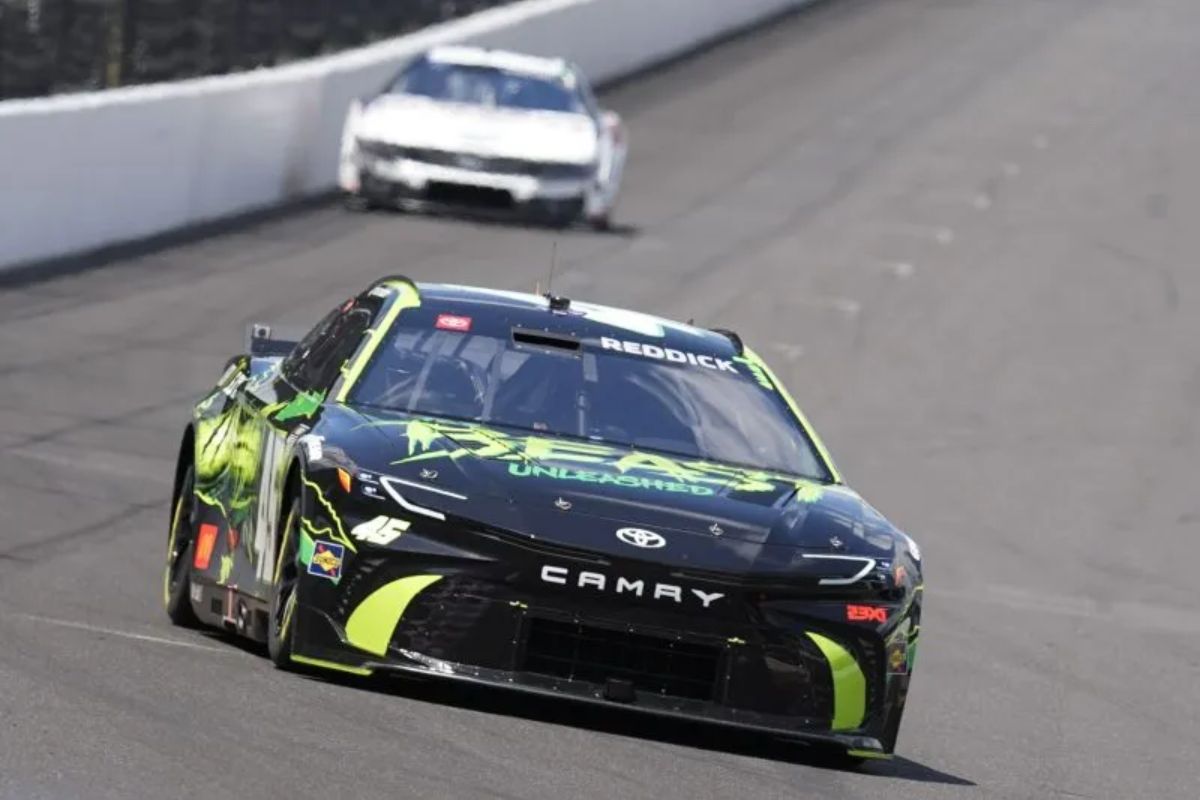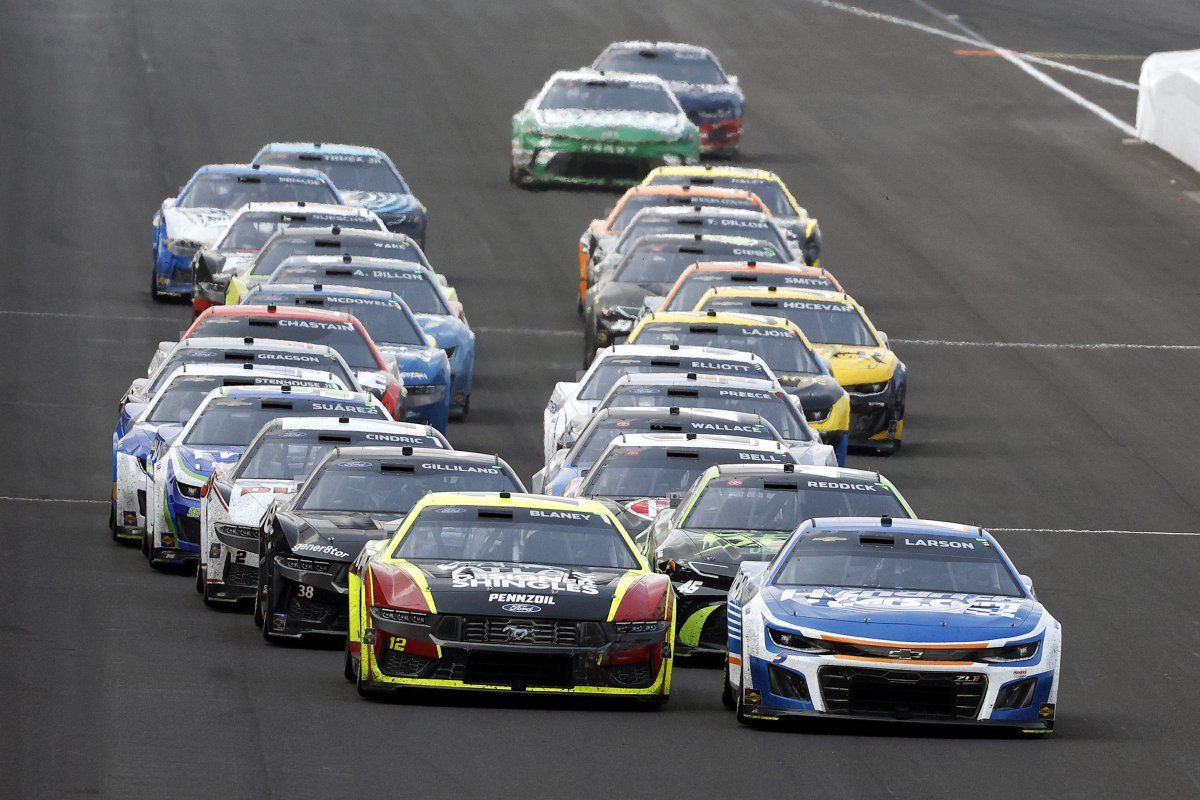Track Records Undermine Next-Gen Car Hype: The introduction of the Next-Gen car was anticipated to revolutionize NASCAR, particularly regarding speed and competition. However, the lack of new track records since its rollout sharply contrasts the achievements of previous years, prompting a critical examination of the current state of racing dynamics. As fans express growing dissatisfaction over reduced overtaking and a perceived decline in excitement, questions arise about the effectiveness of this initiative. Could this stagnation signal deeper issues within the sport, and what implications might this hold for NASCAR’s future direction?
Key Highlights
- The Next-Gen cars have shown an average speed reduction of 8.43 mph compared to previous models, contradicting the goal of increased speed.
- No track records have been set since the introduction of the Next-Gen cars, highlighting a decline in performance standards.
- The lack of overtaking efficiency has diminished competitive racing, shifting focus from skillful maneuvers to tactical navigation.
- Increased development costs and reliance on a single supplier have strained team finances, undermining the intended cost efficiency.
Introduction and Promises of the Next-Gen Car
The introduction of the Next-Gen car in 2022 was heralded as a groundbreaking moment for NASCAR, promising improved competitiveness and cost efficiency that would energize the sport and uplift the driving experience. This new vehicle was designed to level the playing field, allowing teams of varying budgets and resources to compete more evenly. Key objectives included reducing costs through standardized components and enhancing on-track action by enabling more teams to vie for top positions, thereby intriguing a wider audience.
However, the reality has not aligned with these ambitious promises. While the intention was to foster a more dynamic racing environment, track records indicate that the Next-Gen cars are, in fact, slower than their predecessors. This performance setback undermines the very essence of the sport, which thrives on speed and excitement. In addition, the reliance on a single supplier for critical components has stifled market competition, limiting pricing control and ultimately contributing to increased costs for teams, rather than the anticipated savings.
The overarching goal of achieving parity has paradoxically led to a homogenization of the racing experience, resulting in races that many fans perceive as monotonous. The initial excitement surrounding the Next-Gen car has dimmed, prompting a critical reassessment of its impact on NASCAR.
Performance and Parity Issues
NASCAR’s Next-Gen car has encountered considerable performance and parity issues, emphasizing a disappointing deviation from the anticipated advancements in speed and competitiveness. With an average speed reduction of 8.43 mph compared to prior models, the Next-Gen car has not only failed to set new track records but has also highlighted a troubling trend towards excessive parity that hampers competitive racing.
The concept of parity—wherein all cars have similar performance capabilities—was intended to foster closer racing. However, this has resulted in an unintended consequence: the inability of the fastest cars to overtake slower competitors effectively. Consequently, rather than enhancing the racing spectacle, the Next-Gen car’s design has led to a stagnation in on-track action.
Here are the qualifying track records for each of NASCAR’s 26 Cup Series tracks pic.twitter.com/xwBKRiMeby
— Trey Ryan (@TreyRyan99) July 27, 2024
These performance and parity issues call into question the efficacy of the Next-Gen car’s design philosophy. As NASCAR aims to create an engaging product, it must re-evaluate its approach to car performance and balance. Without considerable adjustments, the promise of the Next-Gen vehicle may remain unfulfilled, leaving fans and competitors similarly yearning for a return to the thrilling racing dynamics of previous eras.
Racing Dynamics and Fan Expectations
Racing dynamics within NASCAR have shifted considerably, as fan expectations increasingly favor a competitive landscape where skillful overtaking and tactical navigation prevail over mere parity among vehicles. The current state of the Next-Gen car has led to a homogenization of performance, resulting in a scenario where multiple cars are often indistinguishable in speed, thereby stifling the excitement that comes from drivers outperforming one another through sheer ability.
Historically, NASCAR has thrived on the unpredictability of race outcomes, where a well-executed plan and driver skill could lead to stunning victories. However, the emphasis has increasingly been on fuel conservation and maintaining track position, transforming races into tactical endurance challenges rather than displays of raw speed and competitive overtaking. This shift has prompted dissatisfaction among fans, who yearn for the thrill of dynamic racing rather than the current trend of drivers merely managing their resources.
Moreover, the focus on maintaining parity has inadvertently led to a more monotonous racing experience, where the excitement of a hard-fought battle for the lead is often replaced by cautious driving and tactical caution periods. Fans are left longing for a return to the spirited competition that once characterized the series.
As NASCAR moves forward, addressing these racing dynamics will be essential not only for restoring fan engagement but also for ensuring that the sport remains a compelling spectacle that celebrates both driver ability and competitive integrity.
Cost-Efficiency and Supply Issues
Cost-efficiency remains a pressing concern for teams in the wake of the Next-Gen car‘s introduction, as escalating development expenses and dependence on a single supplier have eroded financial stability and competitive balance within the sport. The anticipated cost reductions that accompanied the Next-Gen rollout have not materialized; instead, teams find themselves facing increased expenditures. The lack of pricing controls exacerbates this issue, as the sole supplier can impose steep charges for parts crucial to maintaining competitiveness.
Moreover, the Next-Gen car has revealed notable performance deficiencies, particularly in traffic situations and during short-track races. These shortcomings not only undermine the racing spectacle but also compel teams to invest further resources in development and modifications to address the car’s inadequacies. The cumulative effect of these challenges is a strain on already limited budgets, leading to a situation where only well-funded teams can effectively compete.
As NASCAR seeks to foster growth and sustainability, it must heed the concerns of its stakeholders, including team owners, drivers, and fans. The current model, which prioritizes a single-source supply chain, risks alienating smaller teams and undermining the competitive landscape that has been a hallmark of the sport.
Without a tactical reevaluation of cost structures and supplier relationships, the long-term viability of NASCAR hinges precariously on the ability of teams to navigate these financial challenges, ultimately threatening the sport’s future as a fiercely competitive endeavor.
Denny Hamlin’s Criticism and Future Outlook
Denny Hamlin’s outspoken criticism of the Next-Gen cars emphasizes considerable concerns regarding their performance and the broader implications for competitiveness within the sport. His frank remarks following races at Richmond, Martinsville, and the Brickyard 400 highlight systemic issues that have left fans and participants disillusioned. Hamlin’s assertions about the cars’ inability to promote overtaking and the dominance of clean air raise critical questions about NASCAR’s direction moving forward.
“If you would have asked me to pass anyone in that final stage, it was just not gonna happen. It’s just physics. It’s just that we’re in a weird spot where the leader has such an advantage on that track because he’s got the clean air. You can run so much faster when you have the clean air. We all know these Next Gen cars are terrible on drafting. They’re the worst cars in NASCAR in traffic.”
“You created a next-gen of drivers that all drive the same, because its clear the optimum way to drive it. So how are you going to create passing? You will not!” – Hamlin
Hamlin’s criticism reflects a broader sentiment among drivers and fans similarly, emphasizing a need for NASCAR to reassess its objectives. The call for improved short-track packages, cost efficiency, and safety standards is crucial if the sport aims to retain its fanbase. As NASCAR navigates this critical crossroads, addressing these concerns will be vital for restoring competitiveness and excitement. Ultimately, the onus lies with NASCAR to implement changes that align with the aspirations of teams, drivers, and fans similarly, fostering an environment where racing can truly thrive.
News in Brief: Track Records Undermine Next-Gen Car Hype
The analysis of the Next-Gen car’s impact on NASCAR reveals a concerning stagnation in performance, highlighted by the absence of new track records and diminished racing excitement.
Despite initial promises of improved competition, the reality has fallen short, leading to widespread disappointment among fans and participants.
A reevaluation of racing dynamics, cost structures, and supply chain challenges is imperative to restore the sport’s competitive edge and fulfill the expectations set forth during the car’s introduction.
ALSO READ: Denny Hamlin Slams NASCAR’s Red Flag Rule: NASCAR Threw Red Flag to Save Fuel




